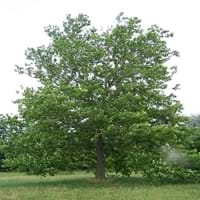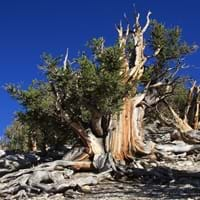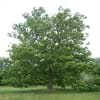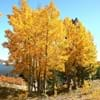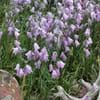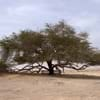Life Span
Perennial
Perennial
Type
Tree
Needled or Scaled Evergreen
Origin
North America, Canada
Western United States
Types
North American sycamore, Middle Eastern sycamore ,The British sycamore
Not Available
Number of Varieties
Not Available
Habitat
bottomlands, Floodplains, Moist woods, Mountains
Rocky areas, Slopes
USDA Hardiness Zone
5-9
2-9
AHS Heat Zone
9-3
Not Available
Sunset Zone
1a, 1b, 2a, 2b, 3a, 3b, 4, 5, 6, 7, 8, 9, 10, 11, 12, 13, 14, 15, 16, 17, 18, 19, 20, 21, 22, 23, 24
A2, A3, 1a, 1b, 2a, 2b, 3a, 3b, 4, 5, 6, 7, 8, 9, 10, 11, 14, 15, 16, 17, 18, 19
Habit
Upright/Erect
Pyramidal
Flower Color
Orange Red, Dark Salmon
Not Available
Flower Color Modifier
Bicolor
Bicolor
Fruit Color
Tan, Sandy Brown
Chocolate
Leaf Color in Spring
Green, Light Green
Green
Leaf Color in Summer
Green, Dark Green
Green
Leaf Color in Fall
Gold, Tan
Green
Leaf Color in Winter
Not Available
Green
Leaf Shape
Orbicular
Needle like
Plant Season
Spring, Summer, Fall, Winter
Spring, Summer, Fall, Winter
Sunlight
Full Sun
Full Sun
Growth Rate
Not Available
Very Slow
Type of Soil
Clay, Loam, Sand
Loam, Sand
The pH of Soil
Acidic, Neutral
Neutral
Soil Drainage
Average
Well drained
Bloom Time
Spring
Not Available
Tolerances
Wet Site, Pollution, Salt, Soil Compaction
Drought
Where to Plant?
Ground
Ground
How to Plant?
Seedlings
Seedlings
Plant Maintenance
Medium
Medium
Watering Requirements
Needs more water during establishment, Needs Very high moisture
Average Water Needs
In Summer
Lots of watering
Lots of watering
In Spring
Moderate
Moderate
In Winter
Average Water
Average Water
Soil pH
Acidic, Neutral
Acidic, Neutral, Alkaline
Soil Type
Clay, Loam, Sand
Clay, Loam, Sand
Soil Drainage Capacity
Average
Well drained
Sun Exposure
Full Sun
Full Sun, Partial Sun
Pruning
Remove damaged leaves, Remove dead branches, Remove dead leaves
Cut limbs, Pinch Tips, Remove branches, Remove damaged leaves, Remove dead branches, Remove dead leaves, Remove dead or diseased plant parts
Fertilizers
All-Purpose Liquid Fertilizer
All-Purpose Liquid Fertilizer
Pests and Diseases
Anthracnose, Canker, Leaf spot, Powdery mildew
Red blotch
Plant Tolerance
Pollution, Salt, Soil Compaction, Wet Site
Drought
Flower Petal Number
Single
Not Available
Foliage Texture
Coarse
Fine
Foliage Sheen
Matte
Matte
Attracts
Birds, Not Available
Birds
Allergy
breathing problems, Skin irritation
Congestion, Dermatitis, Itchiness, Itchy eyes, Runny nose, Whooping Cough
Aesthetic Uses
Landscape Designing, Mixed Border, Showy Purposes
Bonsai, Borders
Beauty Benefits
Not Available
Not Available
Environmental Uses
Air purification, Food for animals, Food for birds, Nesting sites for birds, Prevent Soil Erosion, Shadow Tree
Air purification, Wildlife
Medicinal Uses
Not Available
Antiseptic, Bladder Infection, Boils, Burns, Cold, Cough, Diuretic, Kidney problems, Poultice, Respiratory Disorders, Rheumatism, Skin Disorders, tuberculosis, Vermifuge, Wounds
Part of Plant Used
Bark, Flowers, Fruits, Sap
Leaves
Other Uses
Animal Feed, Application in Furniture, Shelterbelt, Tea-like beverage can be brewed
Used as Christmas Tree, Used in herbal medicines
Used As Indoor Plant
Insignificant
No
Used As Outdoor Plant
Yes
Yes
Garden Design
Feature Plant, Landscape, Mixed Border, Shade Trees, Street Trees
Feature Plant, Foundation, Mixed Border, Rock Garden / Wall, Topiary / Bonsai / Espalier
Botanical Name
PLATANUS occidentalis
PINUS aristata 'Sherwood Compact'
Common Name
American Planetree, American Sycamore, Eastern Sycamore, Buttonwood or Buttonball Tree
Bristlecone Pine
In Hindi
अमेरिकी गूलर
ब्रिस्टलकोन पाइन
पेड़
In German
Amerikanische Platane
Bristlecone Pine
Baum
In French
Platanus occidentalis
Bristlecone Pine
Arbre
In Spanish
Platanus occidentalis
Pino de cerdas cónicas
Árbol
In Greek
Platanus occidentalis
Bristlecone Pine
Δέντρο
In Portuguese
Platanus occidentalis
Bristlecone Pine
Árvore
In Polish
Platan zachodni
Sosna oścista
Drzewo
In Latin
Platanus orientalis
Pinus Bristlecone
ligno
Phylum
Magnoliophyta
Coniferophyta
Class
Magnoliopsida
Pinopsida
Order
Scrophulariales
Pinales
Family
Platanaceae
Pinaceae
Clade
Angiosperms, Eudicots
Not Available
Tribe
Not Available
Not Available
Subfamily
Not Available
Not Available
Number of Species
Not Available
Season and Care of American Sycamore and Bristlecone Pine
Season and care of American Sycamore and Bristlecone Pine is important to know. While considering everything about American Sycamore and Bristlecone Pine Care, growing season is an essential factor. American Sycamore season is Spring, Summer, Fall and Winter and Bristlecone Pine season is Spring, Summer, Fall and Winter. The type of soil for American Sycamore is Clay, Loam, Sand and for Bristlecone Pine is Loam, Sand while the PH of soil for American Sycamore is Acidic, Neutral and for Bristlecone Pine is Neutral.
American Sycamore and Bristlecone Pine Physical Information
American Sycamore and Bristlecone Pine physical information is very important for comparison. American Sycamore height is 2,130.00 cm and width 1,980.00 cm whereas Bristlecone Pine height is 365.76 cm and width 182.88 cm. The color specification of American Sycamore and Bristlecone Pine are as follows:
American Sycamore flower color: Orange Red and Dark Salmon
American Sycamore leaf color: Green and Light Green
Bristlecone Pine flower color: Not Available
- Bristlecone Pine leaf color: Green
Care of American Sycamore and Bristlecone Pine
Care of American Sycamore and Bristlecone Pine include pruning, fertilizers, watering etc. American Sycamore pruning is done Remove damaged leaves, Remove dead branches and Remove dead leaves and Bristlecone Pine pruning is done Cut limbs, Pinch Tips, Remove branches, Remove damaged leaves, Remove dead branches, Remove dead leaves and Remove dead or diseased plant parts. In summer American Sycamore needs Lots of watering and in winter, it needs Average Water. Whereas, in summer Bristlecone Pine needs Lots of watering and in winter, it needs Average Water.
